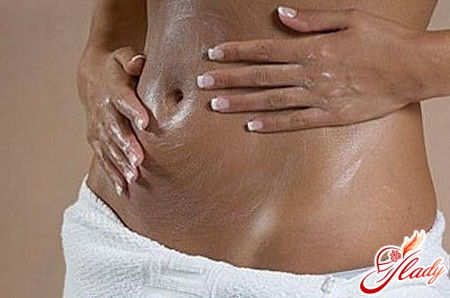 Ingrown hairs are hairs that have failed togrow through the skin and, bending in the opposite direction, begin to grow towards the follicle. Ingrown hairs can appear on the face, arms, legs – on any part of the body where hair grows. As a rule, ingrown hairs are accompanied by only minor irritation, but they can also cause a painful feeling; and skin with ingrown hairs does not look very aesthetically pleasing. In addition, if the problem is not solved, the inflamed skin can become seriously infected. Ingrown hairs most often occur in people with curly hair. But if you often do epilation or shave hair (for example, on your legs), then you greatly increase the risk of ingrown hairs. The fact is that the hair follicle weakens with frequent hair removal, and the hairs become thinner. It is much more difficult for a thin and weak hair to break through the upper layers of the skin, and it begins to grow in the opposite direction. What to do? After all, we can’t refuse depilation? Of course not! Let's find out how to get rid of ingrown hairs if you already have them. It should be said that you will not only be able to get rid of ingrown hairs if you follow our instructions, but you will also prevent their occurrence by following our recommendations regularly. What should you do?
Ingrown hairs are hairs that have failed togrow through the skin and, bending in the opposite direction, begin to grow towards the follicle. Ingrown hairs can appear on the face, arms, legs – on any part of the body where hair grows. As a rule, ingrown hairs are accompanied by only minor irritation, but they can also cause a painful feeling; and skin with ingrown hairs does not look very aesthetically pleasing. In addition, if the problem is not solved, the inflamed skin can become seriously infected. Ingrown hairs most often occur in people with curly hair. But if you often do epilation or shave hair (for example, on your legs), then you greatly increase the risk of ingrown hairs. The fact is that the hair follicle weakens with frequent hair removal, and the hairs become thinner. It is much more difficult for a thin and weak hair to break through the upper layers of the skin, and it begins to grow in the opposite direction. What to do? After all, we can’t refuse depilation? Of course not! Let's find out how to get rid of ingrown hairs if you already have them. It should be said that you will not only be able to get rid of ingrown hairs if you follow our instructions, but you will also prevent their occurrence by following our recommendations regularly. What should you do?
Skin peeling
If you find yourself with ingrown hairs, thenThis procedure should be performed every day. It will help remove dead skin cells, dirt and grease that can prevent free hair growth. The massage movements that are done during peeling can physically push the tip of the hair out of the skin. Just do not overdo it, do not rub the skin too hard, otherwise you will not only not get rid of the problem, but also aggravate it. If you damage the skin and it starts to bleed, then it will be very difficult to remove the ingrown hair from under the scab. It is better to clean the skin gently, but for a longer time. Rubbing movements should be done in different directions. You can put on a special glove for peeling, or you can try one of the three skin cleansing methods we offer. Peeling with paracetamol You should know that the main purpose of peeling is to remove the rough top layer of skin with dead particles. There are various ready-made exfoliants that might be easier to use, but many of them contain harsh ingredients, which is not desirable in your situation. In addition, such products can be quite expensive. Peeling with paracetamol tablets is beneficial from several points of view: on the one hand, you will save money, on the other hand, paracetamol will have an anti-inflammatory and mild pain-relieving effect on the inflamed areas of the skin. Here's how it's done:
Peeling with salt
Olive oil and sugar peeling This peeling is best suited for delicate areas of the skin.
Do this peeling every week and you willget smooth beautiful skin. In addition, doing such peeling regularly, we achieve a double result: the skin becomes soft and tender, and we get rid of the problem with ingrown hairs.
We put on the inflamed places a little medicine for acne
Ingrown hairs look a lot like pimples andappearance, and the condition of the skin. Especially when the ingrown hair is accompanied by inflammation and suppuration. Apply any acne medication several times a day for several days. This, combined with peeling, is often enough to remove ingrown hairs, as the swelling shrinks, giving them more room to grow. If you do not have any acne medications on hand, you can again try the methods we suggest. Reduce redness and inflammation with aspirin
Treating Inflammation with Toothpaste Thisa very old method! You can simply take a drop of toothpaste and place it on the affected area of skin. Then - as with the analgin mixture: rub the paste on the inflamed bump, hold it on the skin for about half an hour, wash off with a clean damp cloth. You probably already understood that with the help of these two remedies you can treat not only inflammation from ingrown hairs, but also acne.
Unravel the skin
If you don't have a problem with ingrown hairs yet,is very acute, then the first two steps will be enough to get rid of it. If the matter is more serious, continue further. The next day after peeling, steam the skin for several minutes with a rag soaked in hot water. Wring out the rag and place it on the area with ingrown hairs. As soon as the towel cools down, soak it in hot water again, wring it out and place it on the skin. Repeat this until the hairs in the steamed skin rise to its surface. If you have applied the compress for ten minutes, but still do not see any signs of hair, then you must state the fact that you will not be able to remove them yourself. Or the problem is not in the ingrown hairs at all. In any case, you will have to contact a specialist.
Depilation
Use sterile tweezers to carefullyto get the hair out of the skin. The warm compress should have lifted it to the surface of the skin; if you understand that you cannot grab the hair, then do not pick at the skin to get to it. Be patient, the process of “getting” the hair can take some time. Sometimes you can see a kind of loop from the hair. This means that the hair broke through the skin, but then bent and began to grow back into the skin. This often happens if the hair is curly. Then take a clean needle, put its tip through the loop and gently pull, releasing the hair. Most often, the tip of the hair comes out freely.
End of procedure
After you get rid of ingrown hairs youcompletely succeeded, wash the treated area with warm water and a mild washing gel. Apply an antiseptic to the skin to provide additional protection against infection. In the future, try not to wear tight clothing or shoes in contact with this area, so as not to provoke new ingrown hairs. And finally, a few more tips:
- Instruments can be sterilized in boiling water or with alcohol.
- Do more skin peeling, and it will be easier for hairs to break through it.
- The longer the hair, the less likely that they will curl up and begin to grow into the skin, so it's better not to shave them under the root. Use a razor with one blade, and not with three or five.
- In any area of the skin that is prone to ingrowth of hair, never use a comedogenic (clogging pore) cream.
- If the inflammation spreads beyond the hair follicle or persists for several days after the hair has been released, consider visiting a dermatologist.
We recommend reading:









